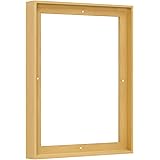The quest for sleek, minimalist lighting often encounters a significant hurdle: the absence of a false ceiling. Many homeowners and designers desire the contemporary aesthetic of profile lights. However, conventional recessed installations demand extensive structural modifications. Thankfully, innovative solutions now exist. Achieving sophisticated, integrated illumination is entirely possible without dropping your ceiling.
Understanding the Profile Light Conundrum
Traditional profile lighting, by design, often necessitates a recessed installation. This means cutting into an existing false ceiling structure. The goal is a seamless, flush finish. Without this cavity, standard profile light systems are difficult to integrate. The challenge becomes how to achieve a similar ‘built-in’ look. This constraint frequently deters those with existing concrete slabs. Furthermore, the perceived complexity can seem overwhelming.
Surface-Mounted Profile Lights: A Prime Solution
The answer largely resides in surface-mounted LED profile lighting. These systems offer unparalleled design flexibility. They attach directly to any flat surface. Often, robust aluminum extrusions house the LED strips. A diffuser then softens and evenly spreads the light. This creates a clean, linear light source. Rather than hiding within a cavity, they become an intentional design feature.
Varieties of Surface-Mounted LED Profiles
Surface-mounted profiles come in various shapes and sizes. Some are very slim, almost disappearing into the architecture. Others feature a bolder, more architectural presence. These can be rectangular, square, or even curved. The choice depends on the desired aesthetic impact. Their adaptability transforms ordinary spaces. They offer a striking contrast to bulky, traditional fixtures.
Technical Specifications: Navigating Lumens and Kelvin
Selecting the right profile light extends beyond its physical form. Lumens determine the brightness of the light output. A higher lumen count means more intense illumination. Color temperature, measured in Kelvin (K), dictates the light’s warmth or coolness. For instance, 2700K is warm white, akin to incandescent bulbs. Conversely, 5000K is a cooler, daylight white. The Color Rendering Index (CRI) measures how accurately colors appear under the light. A high CRI (90+) is crucial for true color representation. Think of light as an artist’s palette; each specification paints a different mood.
Power Drivers and Electrical Considerations
Profile lights typically operate on low voltage DC power. This necessitates an LED driver, or power supply. Drivers convert standard AC mains voltage to the required DC voltage. Proper driver selection is critical for system longevity. Consider dimmable drivers for adjustable brightness. Always ensure drivers are appropriately sized for the total LED strip wattage. This prevents overheating and extends component life. Incorrect wiring can lead to system failure. Professional consultation is often advisable for complex installations.
Installation Nuances for Profile Light Systems
Installing a profile light without a false ceiling requires precision. Mounting clips or brackets are screwed directly into the ceiling surface. The aluminum profile then snaps securely into these. Some designs feature pre-drilled holes for direct screw mounting. Concealing the wiring is key to a clean finish. This might involve chasing grooves into the wall or ceiling. However, surface-mounted conduit can also become a design element. Consider painting conduits to match the ceiling color. This can make them virtually disappear. Alternatively, a contrasting color can create an industrial aesthetic. Careful planning streamlines the installation process. It also ensures a professional result.
Beyond the Ceiling: Versatile Profile Light Applications
The utility of profile light systems extends far beyond the ceiling. They can be effectively integrated into walls, creating stunning architectural lines. Install them along the perimeter of a room for subtle cove lighting effects. They also work brilliantly for accentuating shelves or cabinetry. Imagine a linear profile light illuminating a kitchen backsplash. Or consider them embedded in flooring for pathway guidance. These applications redefine interior lighting design. They transform functional lighting into a feature statement. A clever profile light without false ceiling can dramatically elevate any space.
Aesthetic Integration: Elevating Home Decor
Profile lights contribute significantly to modern interior aesthetics. Their linear form factor complements contemporary design principles. They can create strong visual lines, guiding the eye through a space. Used judiciously, they enhance spatial perception. They make rooms feel larger and more open. Different finishes, like black, white, or anodized aluminum, offer distinct looks. Black profiles can disappear into dark ceilings. White blends seamlessly with lighter tones. These lights are not merely illumination sources. They are integral components of the architectural narrative. They act like a carefully placed brushstroke, completing the design canvas.
Creating Specific Lighting Effects
The choice of diffuser impacts the quality of light. Frosted diffusers provide a softer, more uniform glow. Clear diffusers allow for a more direct, brighter output. Some profiles offer directional flexibility. This allows the light to be angled precisely where needed. Consider using a narrow beam angle for accent lighting. Use a wider angle for general ambient illumination. The versatility of a profile light without false ceiling truly shines here. It offers tailored lighting solutions for every design challenge.











